In recent years, more people worldwide have been using wireless sensor networks. The effective design of WSNs is becoming an area of research in major research sites. In this paper, we will talk about the definition of wireless sensor networks and their related applications.
What is a Wireless Sensor Network?
A wireless sensor network (WSN) can be defined as a self-configuring wireless network. And no extra infrastructure is required. It is designed to observe physical or other environmental conditions. Such as pressure, motion, temperature, sound, and vibration. It also connects this data or information directly to a receiver through the network. This receiver is often considered the primary location for observing and analyzing information.
The interface between the user and the network seems to consist of a base station or a receiver. At this point, people can insert queries into this interface and have the results collected by the receiver. They can then retrieve the information they need from the network.
Wireless sensor networks have thousands of sensor nodes. These nodes allow them to communicate with each other using radio signals. Wireless sensor nodes are also equipped with powerful components. These components are sensing, radio transceivers, computing devices, and power supplies.
Wireless sensor nodes are inherently resource-constrained. These nodes have limited processing speed, storage capacity, and communication bandwidth.
They deploy sensor nodes in the area. After that, they will be responsible for organizing the appropriate network infrastructure. Multi-hop communication with them will then take place. The onboard sensors then start collecting information about the data of interest to the user. The wireless sensor network device handles replying to the query sent by the control station. Upon receiving a query, it immediately executes a specific command or provides a sensing sample to the user.
The sensor nodes usually work in a continuous or event-driven manner. GPS and LPS local positioning algorithms can get specific location and positioning information.
Wireless sensor devices are typically equipped with efficient actuators. These actuators are designed to “act” under certain conditions. These networks are often referred to as wireless sensor and actuator networks.
Wireless sensors offer more advantages than traditional stand-alone sensors and controllers. WSNs are site-specific and can be placed near the production site. It also allows users to customize the network nodes to track their variables of interest. Users can also increase the number of sensors and controllers per unit area by using many nodes. The use of wireless sensor networks can help users effectively reduce the number of sensors deployed as well as the cost of the network.
Types of Wireless Sensor Networks
Wireless sensor networks are classified into different types according to their usage environment. People can deploy these networks on land, underground, underwater, etc. WSN types include the following:
- Terrestrial wireless sensor networks
- Underground wireless sensor networks
- Underwater wireless sensor networks
- Multimedia wireless sensor networks
- Mobile wireless sensor networks
Terrestrial Wireless Sensor Networks
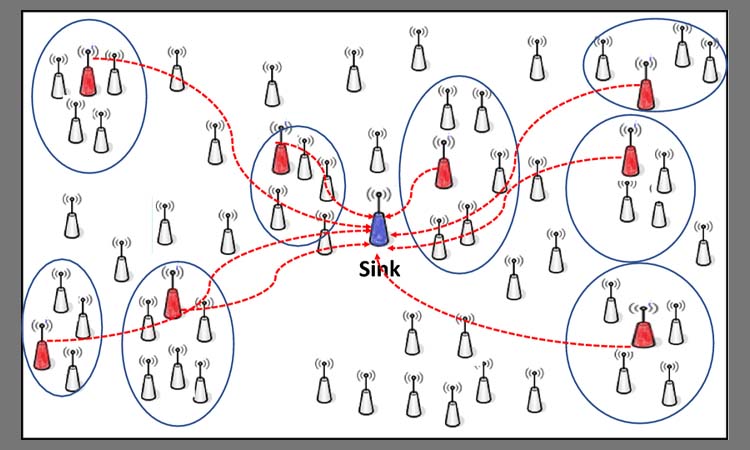
A terrestrial wireless sensor network is designed to communicate with base stations. The wireless sensor is deployed in a structured (ad hoc) or unstructured (pre-planned) mode for thousands of WSN nodes. In an unstructured deployment, the sensor nodes are randomly distributed in the target area dropped from the set plane. Omit, structured mode considers optimal placement, grid placement, and 2D and 3D placement models.
The terrestrial wireless sensor network is equipped with a solar cell. The battery is used only as an auxiliary energy source, and the power of the network battery itself is limited. WSN achieves energy savings through a few operations. Such as low-duty cycle, optimized routing, minimized latency, etc.
Underground Wireless Sensor Networks
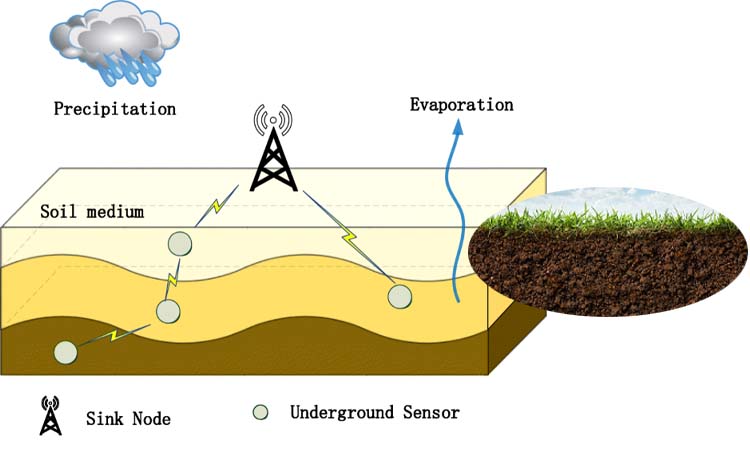
Underground wireless sensor networks are more expensive than terrestrial wireless sensor networks. Users should consider deployment, maintenance, and equipment costs before using this WSN. Underground wireless sensor networks have several sensor nodes that can track subsurface conditions. These underground sensor nodes are usually hidden. The rest of the nodes are above the ground. They send data to the base station through specialized sensor nodes.
Underground wireless sensor networks face several challenges. It is difficult for people to charge underground wireless sensor networks deployed underground. Even sensor nodes equipped with batteries do not have easy access to energy. Second, the underground environment also makes the communication signal significantly weaker. It is difficult for people to use wireless communication in this environment.
Underwater Wireless Sensor Networks
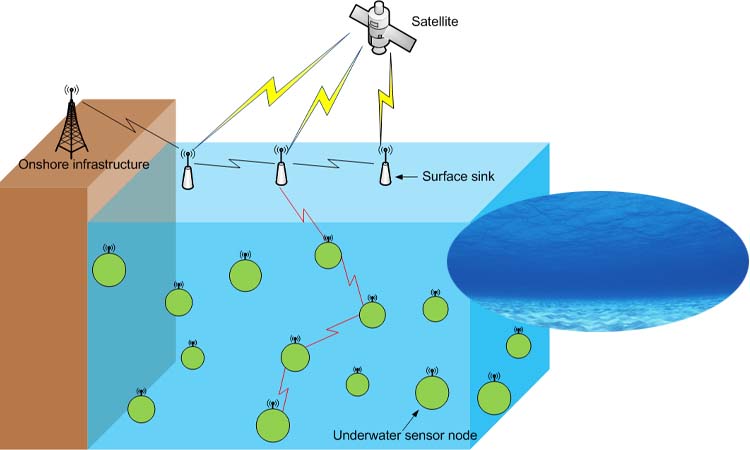
According to relevant studies, more than 70% of the earth’s area belongs to marine resources. Underwater wireless sensor networks consist of many sensor nodes and vehicles underwater. These underwater devices and vehicles collect data from the deployed sensor nodes.
The underwater environment makes wireless communication a huge challenge. The underwater environment is prone to propagation delays, bandwidth, and sensor failures. One also equips WSNs with limited batteries that cannot be recharged or replaced for energy issues.
Multimedia Wireless Sensor Networks
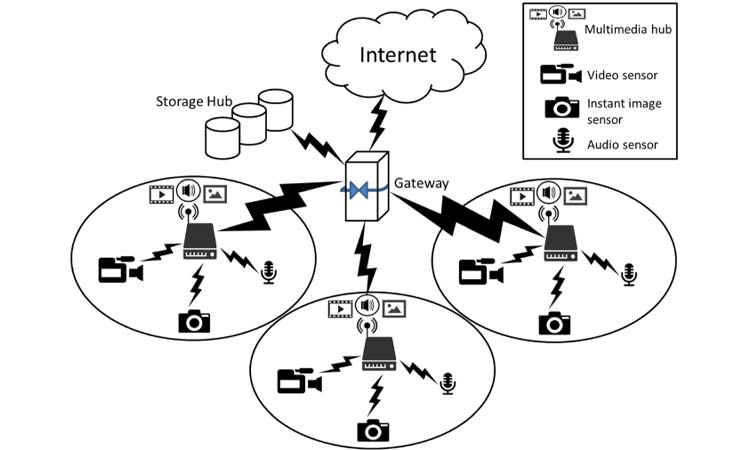
Multimedia wireless sensor networks enable people to track and track multimedia events. For example, some video, imaging, and audio. The network sensor nodes are mainly equipped with cameras and microphones. These sensing nodes are connected through the Internet. They provide users with data retrieval, data compression, and correlation functions.
There are many problems with multimedia WSNs. For example, high bandwidth, high energy consumption, and difficult processing and compression techniques. In addition, multimedia must be in high bandwidth to deliver content properly.
Mobile Wireless Sensor Networks
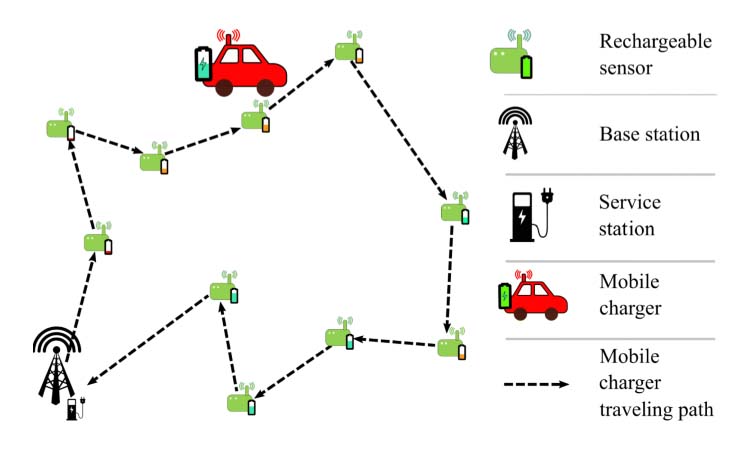
A mobile wireless sensor network consists of sensor nodes that can move freely. These nodes can interact with the physical environment and compute sensing and communication. Mobile wireless sensor networks are more versatile than static sensors. It also has more advantages. Mobile WSNs have superior channel capacity, better energy efficiency, etc.
Wireless Sensor Networks Applications
Various applications of WSNs are widely used in the world. Based on the nature of wireless sensor network applications, we can classify them into five categories. They are as follows:
- Military
- Health
- Environment
- Animal and plant
- Industrial
Military Applications
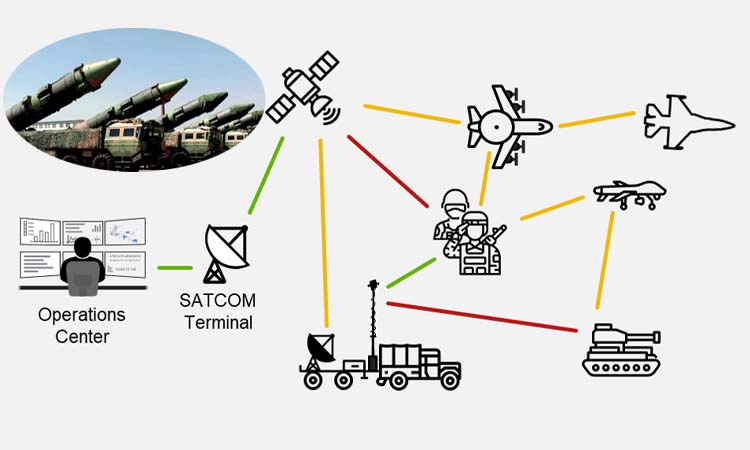
The military sector is considered by most to be the driving force behind sensor network research. This field is also the first area of human activity to use WSNs. As sensor technology advances, it can support a wide range of operations. WSN military applications are primarily battlefield surveillance, combat surveillance, and intruder detection.
Sensors can be used to detect substances composed of chemical, biological, and radiological. And toxic industrial materials (TIM). To detect intrusions, one would use several types of WSNs. Such as infrared, optoelectronic, laser, and vibration sensors. Among them, the nodes of WSN will use RADAR, LIDAR, LADAR, and ultrasonic sensors to detect the distance to the target object. In this case, RADAR means radio detection and ranging, and LIDAR is light detection and ranging. And LADAR is laser detection and ranging. The LADAR and infrared sensors also help in rapid imaging.
Deploying sensor nodes on the battlefield near paths that enemy forces could use is one of the effective WSN applications. A WSN on the battlefield can work without continuous manual attendance and maintenance and send its location. You must be aware that there are many variables on the battlefield. Thus the coverage and energy consumption of the sensor nodes play an important role here.
Health Applications
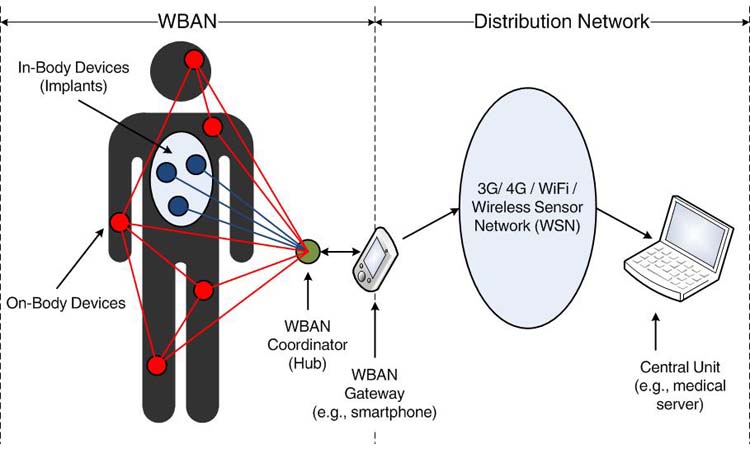
Wireless sensor networks use advanced medical and wearable devices in the health field. Medical sensors track patients in medical facilities, hospitals, or at home. At the same time, wearable devices track these patients’ vital signs in real-time. The combination of medical sensors and wearables offers many benefits. It enables doctors to track patients’ health conditions remotely. It significantly reduces the cost of treatment for patients.
A prime example is real-time electrocardiograms (ECGs). The real-time sensors used by ECGs provide patients with personalized medical care help. Real-time sensors also allow doctors to track patients’ blood sugar levels and other diagnoses.
Environmental Applications
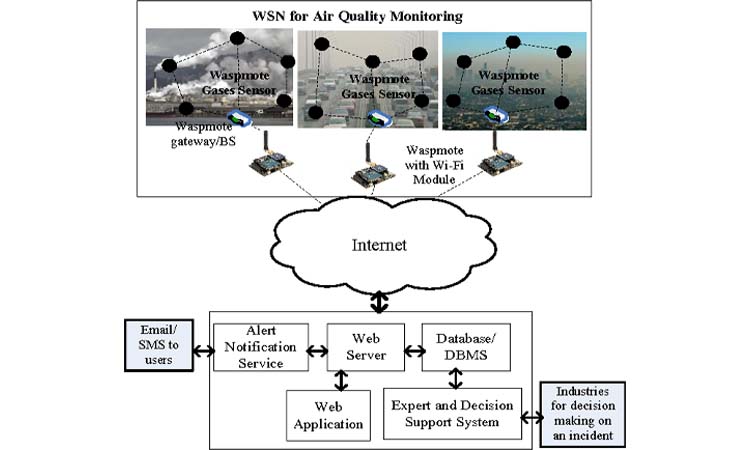
Continuous monitoring of environmental conditions in a specific area is achieved using WSN. WSN also helps to help it improve environmental applications. The network can prevent it from harming people’s health through dangerous airborne diseases. The more common WSN environmental applications are water quality monitoring and air monitoring.
Wireless Sensor Network to Monitor Water Quality
People can use PipeSense’s cyber-physical system to assess the quality of fresh drinking water. The system uses an RFID-based WSN within the pipeline for water quality monitoring. The network supports the provision of various information about water demand or water quality. Some maintenance information, such as weak points or pipe leaks, is also available for viewing. The pipeline handles RFID sensors to collect information from the system and send it to the designated data service. Then algorithms use this information to provide decision support.
Air Monitoring
People can use wireless sensor networks to track air quality areas occupied by hostile forces. WSN-AQMS is a typical example of an air monitoring application. The system combines gas sensors with Libelium waspmotes. The combination of the two can measure air quality parameters for gases such as ozone, CO, and NO 2.
Plant and animal applications
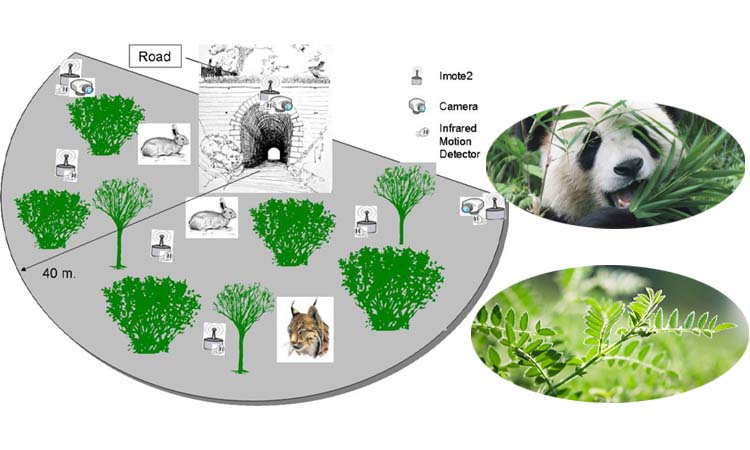
WSN can be applied to greenhouse monitoring and improving its operation. Farmers can collect environmental parameters using a system called the AEMS. The system uses WSN sensors in conjunction with CCTV cameras. Farmers can collect and track crop growth data inside and outside the greenhouse. They mainly collect environmental parameters. Such as temperature, light intensity, humidity, air pressure, rainfall, etc.
People can track the growth of crops in greenhouses through this system. At the same time, people can also use them to increase yields or improve crop quality by changing certain environmental factors.
Industrial Applications
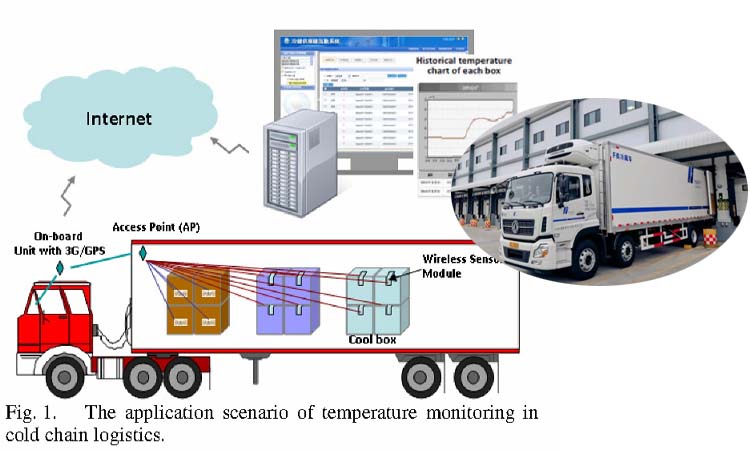
The application of WSN in various industrial applications solves a lot of troubles. Many logistics systems will use WSN for real-time monitoring of various environmental parameters. It helps the workers to handle the packages better. WSN-based system deployment, companies can track the transport conditions of various transport routes. For example, the temperature and humidity inside a moving truck container. The study results show that using WSNs in logistics improves quality by providing better oversight. It also helps to reduce costs by reducing losses during transportation.
Applying WSN in cold chain logistics can improve its monitoring and management. WSN can track various environmental parameters in real time. It can provide enterprises with accurate data to meet cold chain logistics needs.
There are many more potential applications for wireless sensor networks.
- Internet of Things
- Automation and smart home
- Video surveillance
- Traffic monitoring
- Medical device monitoring
There is no doubt that wireless sensor networks have extraordinary capabilities. Wireless sensor networks offer significant advantages in all areas of human activity. As the technology continues to evolve, the range of WSN applications is expected to grow.
About Wireless Sensor Networks FAQs
-
What are Wireless Sensor Networks, and how do they work?
Wireless Sensor Networks are networks of small, low-cost sensors that communicate wirelessly to monitor and control a physical environment. The sensors collect data and send it to a central node or base station for processing.
-
What are the different types of sensors used in Wireless Sensor Networks?
The sensors used in Wireless Sensor Networks include temperature, humidity, pressure, motion, and light sensors.
-
What are the different communication protocols used in Wireless Sensor Networks?
The communication protocols used in Wireless Sensor Networks include Zigbee, Bluetooth, Wi-Fi, and LoRaWAN, among others.
-
How do Wireless Sensor Networks handle data management and processing?
Wireless Sensor Networks handle data management and processing through local processing on individual sensors and centralized processing on a base station or cloud server.
-
What are the security considerations when implementing Wireless Sensor Networks?
The security considerations when implementing Wireless Sensor Networks include authentication, access control, encryption, and intrusion detection.
-
How do Wireless Sensor Networks handle power management for long-term operation?
Wireless Sensor Networks handle power management for long-term operation through low-power sensors, energy harvesting, and sleep modes.
-
What are some of the common deployment scenarios for Wireless Sensor Networks?
Common deployment scenarios for Wireless Sensor Networks include building automation, industrial process control, and environmental monitoring.
-
How do Wireless Sensor Networks handle sensor placement and optimization for maximum coverage?
Wireless Sensor Networks handle sensor placement and optimization for maximum coverage using algorithms that optimize sensor placement based on environmental factors and coverage requirements.
-
What are the differences between centralized and distributed Wireless Sensor Networks?
Centralized Wireless Sensor Networks rely on a central node or base station for data processing and control, while distributed Wireless Sensor Networks distribute processing and control functions among individual sensors.
-
How can Wireless Sensor Networks be integrated with other monitoring and control systems?
Wireless Sensor Networks can be integrated with other monitoring and control systems using APIs and protocols, allowing data exchange and interoperability.
-
How can Wireless Sensor Networks be used for predictive maintenance and condition monitoring?
Wireless Sensor Networks can be used for predictive maintenance and condition monitoring by collecting and analyzing data on equipment performance and identifying potential issues before they become serious.







